Sandfellsjökull is a 12 km long east-facing glacier. It descends from 1400 m to 230 m, where its snout meets the mountain where Sandfellsjökull derives its name from: Sandfell, a table mountain (or stapi) surrounded by vast outwash plains.
At the onset of the twentieth century Sandfellsjökull was longer than it had been for millennia. It reached beyond Sandfell mountain and evolved into a piedmont lobe (flowing out in all directions) to the north of Sandfell. Moraines formed in those days are evidence of this vast glacial extent.
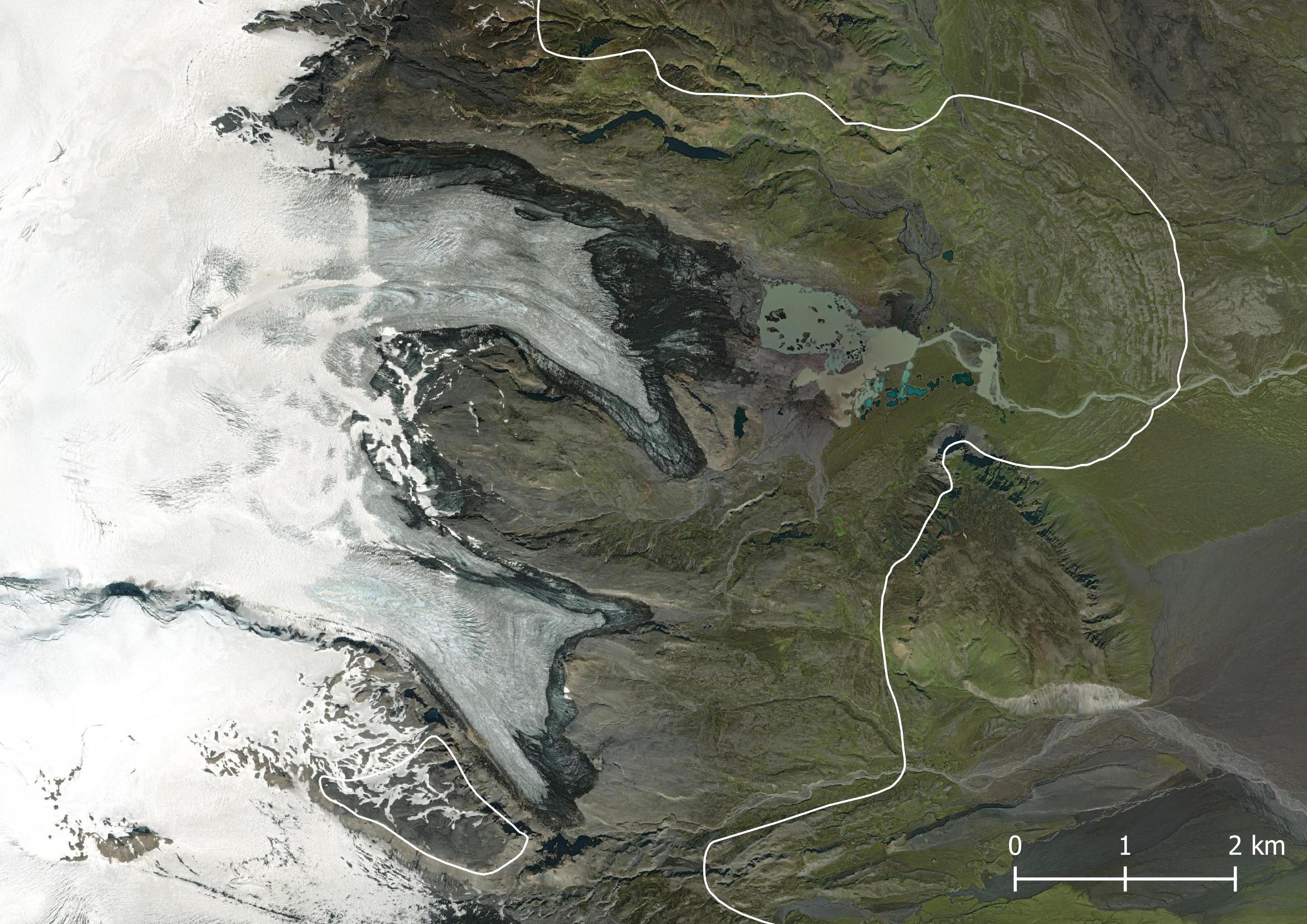
Early in the previous century Sandfellsjökull started to retreat. In the first thirty years the glacier lost a kilometer of its length. A modest melt rate, compared to the next period. From 1930 to 1945, Sandfellsjökull lost another 1.5 kilometer. This was followed by a long period of decreasing loss and eventually a period of slight advance, over the years 1980-1992. The most recent thirty years are characterized by strong retreat again (Evans et al., 2018).
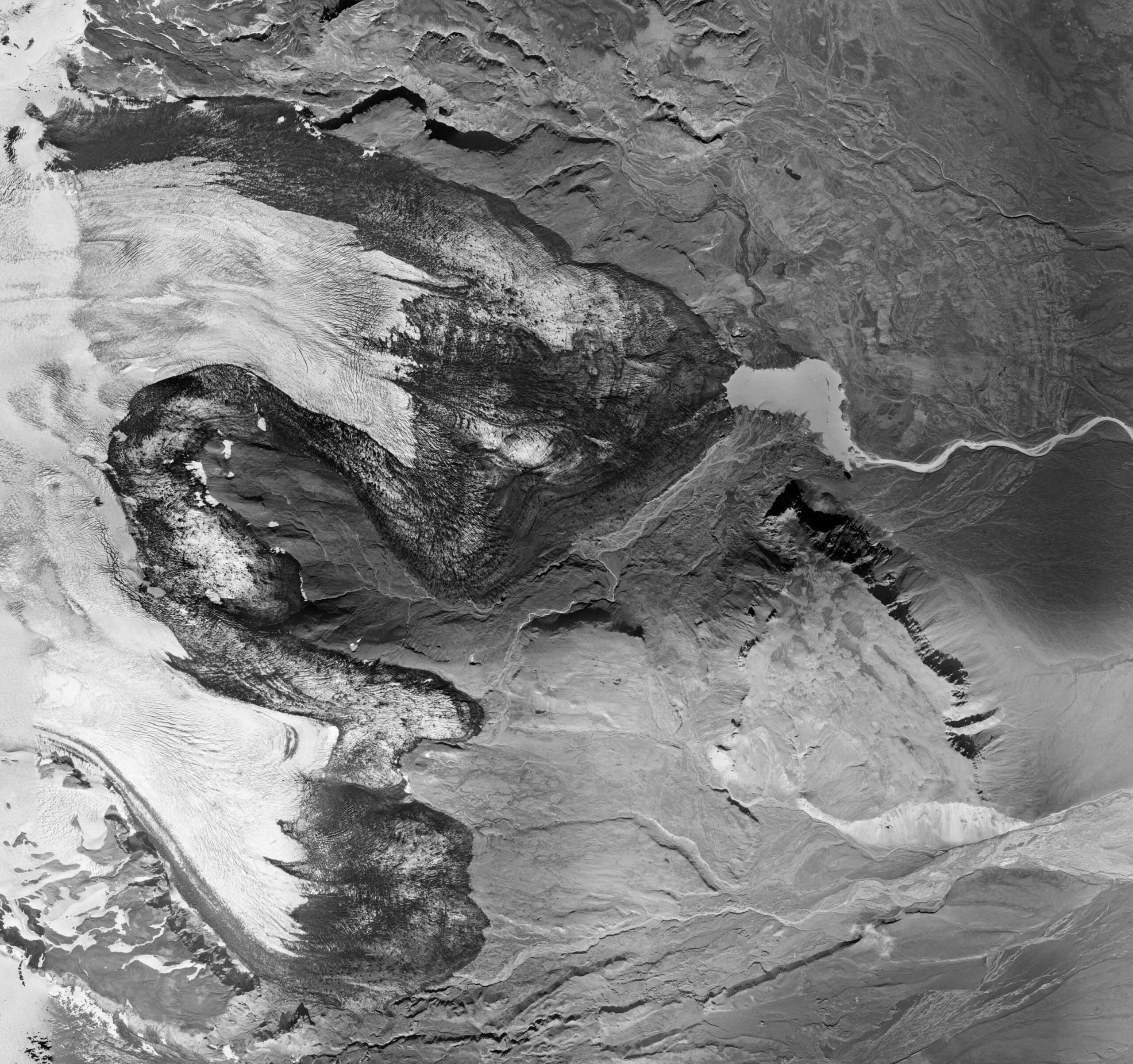
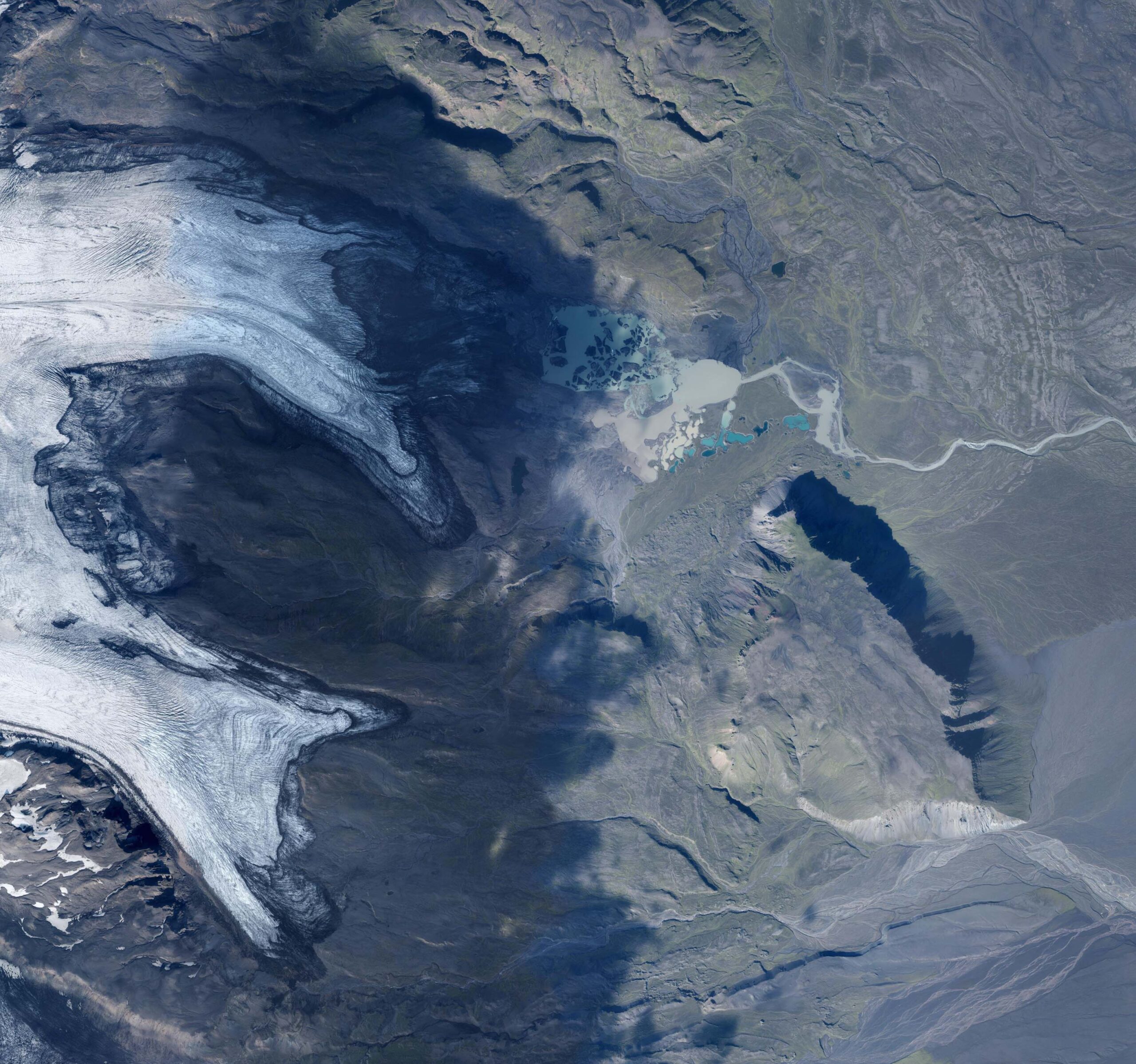
Sandfellsjökull in 1984 (links) en 2020. Rechts de Sandfell. Bron: Landmalingar Island en Loftmyndir ehf.
A hundred years ago Sandfellsjökull was a consecutive mass of ice. Due to continued loss of ice a mountain began to appear around 1950. Nowadays this – still nameless – mountain splits the glacier in a northern and a southern half. Shortly after the mountain appeared, meltwater of the southern branch must have incised into the ridge separating him from his northern sibling. Instead of the easterly, its meltwater found a new northerly route, thereby merging with meltwater of the northern branch. An ever deepening cut was created.


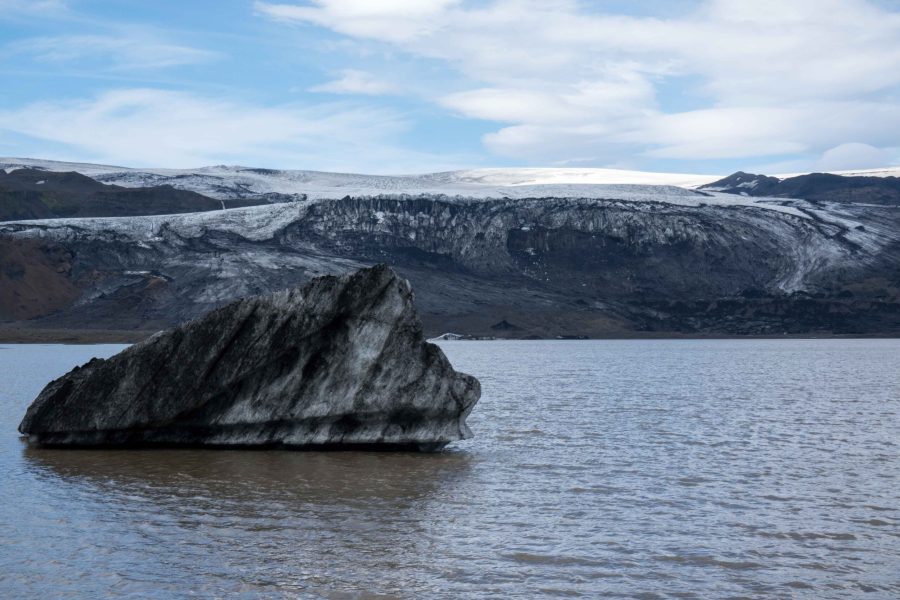
The northern part of Sandfellsjökull has eroded a depression or overdeepening. Sandfellsjökull always completely filled the overdeepening itself, but slowly left it because of melt. Where the glacier recedes, water fills the trough and sediments starts filling it. For the past twenty years Sandfellsjökull occupied a shrinking part of the lake, but as of 2021 the glacier no longer reaches the water. Two years later the last icebergs were seen drifting around, orphaned.
On July 27th 2024, a glacier flood or jökulhlaup originated from Sandfellsjökull. Meltwater from geothermal heat had collected in Katla’s caldera and suddenly flowed eastwards underneath Mýrdalsjökull ice cap. It flooded the southern tip of Sandfellsjökull and continued over the vast Mýrdalssandur. River Skálm swelled to a 1 km wide torrent and damaged the ring road, which was closed for two days.
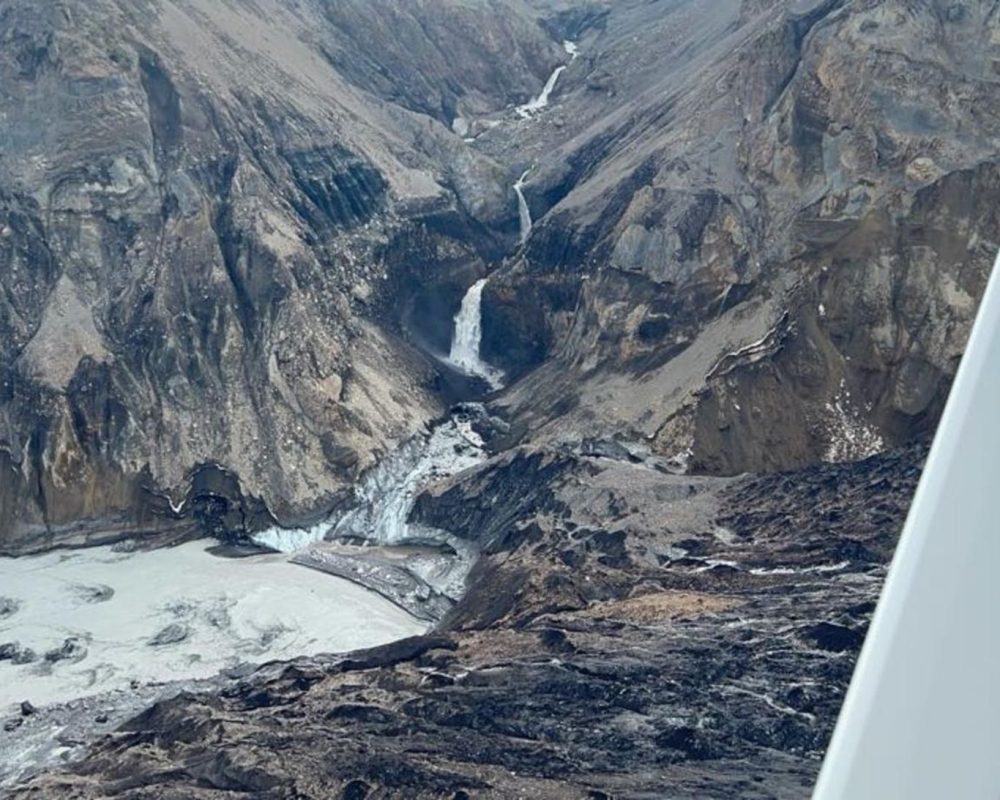
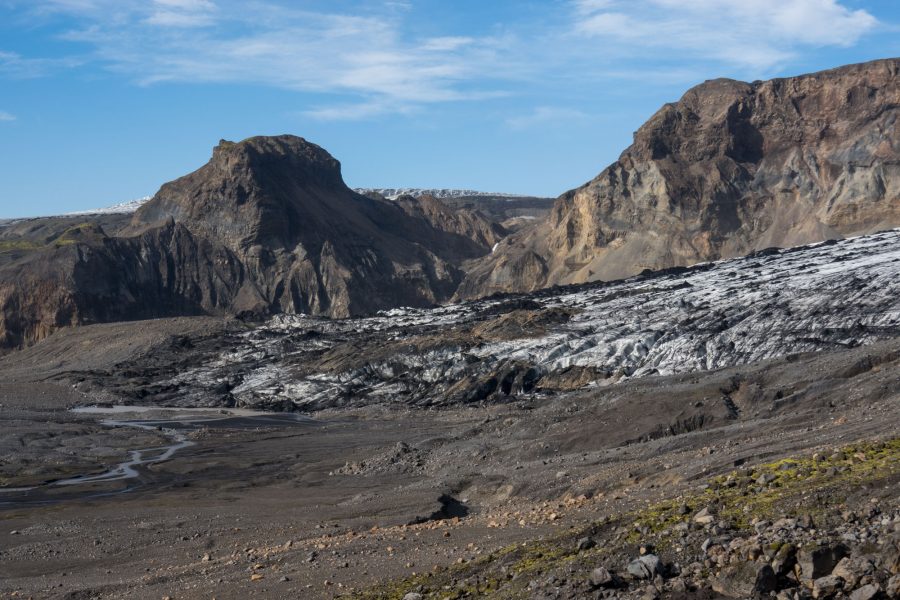
The area hasn’t seen such a large flood in a long time. Speculation as to whether it would lead up to a bigger eruption of Katla began, but was deemed unlikely by experts. Although the next eruption of Katla (which erupted for the last time in 1918, see Kötlujökull) is long overdue, the relatively small eruption of 2024 only adds to the speculation.
Search within glacierchange: